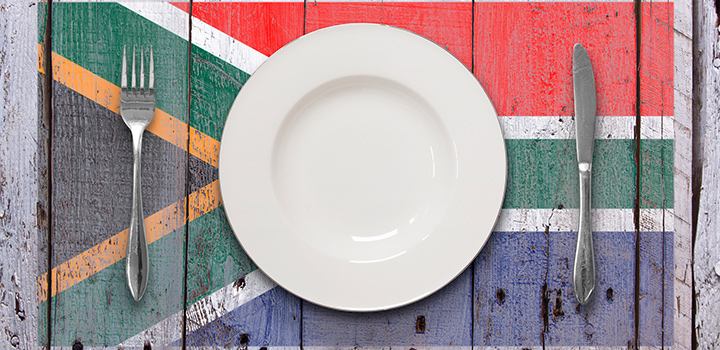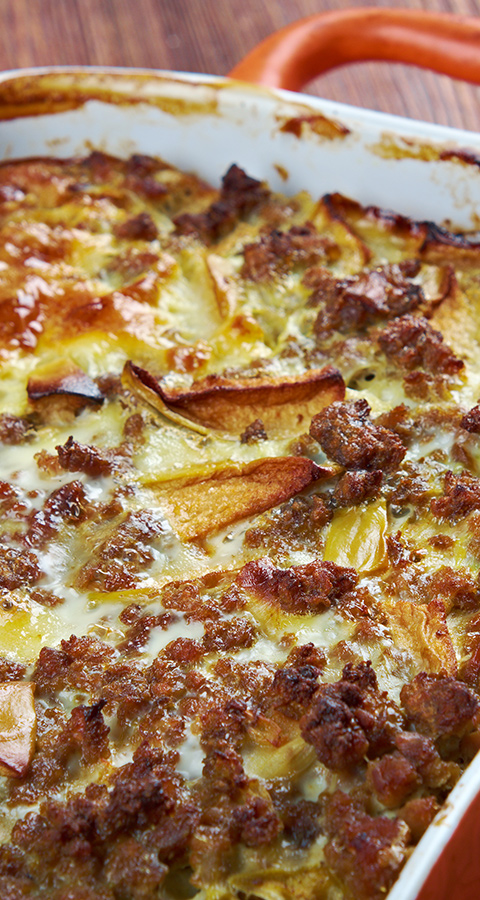Twist the traditional - put a spin on your plate this Heritage Day

On Heritage Day, proud South Africans across the land take the time to reflect on our different cultures. And what better way to celebrate our unity in diversity than through food, glorious food!
Heritage Day is a day in which South Africans are encouraged to celebrate the great diversity of cultures, beliefs and traditions that make up our rainbow nation. Cooking and eating together with friends and family is a great way to connect socially. It can also serve as an opportunity to share and pass on cultural and nutritional knowledge and skills.
In honour of our rich shared heritage, here are some tips for healthy twists on nine national favourites (one for each province, listed in order of increasing population density):

1. Smaak some bobotie in the Northern Cape
Bobotie, a traditional Cape Malay meal, has spread across the country, one hearty helping at a time. This minced lamb or beef dish is spiced with curry powder, herbs and dried fruit, then topped with an egg-milk mixture and oven-baked. Amp up the fibre content by adding (or replacing the red meat with) cooked lentils. Just remember to rinse tinned legumes under cold running water to lower their salt content, and go easy on any accompanying blatjang, that dangerously sweet love-child of chutney and jam!
2. Indulge in some creamy Free State melktert
Melktert (milk tart) is a pale, smooth, dairy pie topped with sprinkles of cinnamon. Light, creamy and cool, this comforting tea-time treat has stood the test of time by being easy to make, transport and, quite frankly, devour. Remember that while desserts like melktert can be enjoyed on occasion, healthy balance means keeping your portion sizes small.


3. Chow on pap and chakalaka in the North West
Pap, meaning 'porridge', is a starchy dish made from local staple, white corn maize. Its trusty partner chakalaka is a simple, saucy vegetable dish made of tomatoes, onions, green peppers, beans, carrots and spices. Readymade chakalaka can be high in salt and sugar, so check the label, or make your own at home.
4. Give tripe a taste in the Eastern Cape
Also known as mogodu, tripe refers to the stomach lining of animals like ox, cows, sheep or pigs. It's slow-cooked for hours and often served with ting, a stiff porridge made of fermented sorghum (mabele). While tripe's distinctive texture may take getting used to, the dish is economical, nutritious and helps cut down waste (à la head-to-tail eating). Tripe is also considered a delicacy in countries like Italy and France.


5. Limpopo loves a little umngqusho
Vegetable sources of protein such as beans, lentils and chickpeas are great alternatives to meat. Cited as one of Madiba's favourites, umngqusho is a simple, starchy dish consisting of samp (unhusked maize) and beans. High in fibre, it makes for a filling and nutritious dish, and is typically paired with a slow-cooked stew or a 'smiley' (sheep's head).
6. Savour some snoek in the Western Cape
Fish fit for a main dish? Well, it's got to be snoek: a type of mackerel found all around the country's ample coastline. You have to be extra careful with all its fine bones, but this fish is well worth picking apart for its flavoursome taste. Snoek is rich in omega-3 fatty acids and, steamed, poached, battered or braai-ed, it's a food-lover's treat. Looking for a tasty snoek recipe? Try this delicious Niçoise-style salad from the Vitality HealthyFood Studio.


7. Munch down on amagwinya in Mpumalanga
Unfortunately, this sidewalk bestseller doesn't score any points on the health chart. There's a reason the Afrikaans word (vetkoek) for these doughy balls deep-fried in oil translates literally to 'fat cake', so save them for special occasions only and opt for vegetable or legume fillings over mince, cheese or jam.
8. KwaZulu-Natal's the place to bite down on bunny chow
This popular take on a sandwich was originally conceived by the immigrant Durban Indian community to give workers a quick and tasty lunch on the go. Bunny chow consists of hollowed-out bread loaves stuffed with pickles and spicy curry (with chicken, pork or vegetarian varieties). For a healthier spin, use whole-wheat bread and fill it up with fibre-rich beans.


9. Grill up that braaivleis in Gauteng
Few things are as quintessentially South African as the aroma of braai-ing meat wafting up from all corners of the country on a Saturday afternoon. Also called shisa nyama (literally 'burn the meat' in Zulu) - sizzling meat over smouldering coals is one of the tastiest and most social ways to go about it. Braai-ing adds a delicious sweet and smoky flavour to veggies like corn on the cob, peppers, onions and courgettes.
Get healthy ingredients for a fraction of the cost
Good nutrition doesn't have to be expensive. Vitality's HealthyFood benefit helps you spot healthier alternatives in-store, and gives you up to 25% cash back on them! Have a look at the Pick n Pay and Woolworths HealthyFood catalogues to view the wide range of items that qualify for cash back.
Remember, what you put into your body makes a tangible difference to your health, so start getting rewarded for making healthy choices. SMS "Join" to 47751 and activate the HealthyFood benefit today.
Looking for more healthy tips and tried-and-tested recipes?
South African soil abounds in fantastic produce all year round, and the Vitality HealthyFood Studio seasonal delights course explores some lesser-known fruits and vegetables and help you to create delicious, healthy meals, throughout the year.
Related articles
Picking pickled peppers and Peter Goffe-Wood's brain
As an acclaimed restaurateur, author, food critic, TV and stage personality, not to mention a celebrity judge for MasterChef SA and the Diners Club 50 Best Restaurants in the World, it's clear that a chef's toque blanche is just one of the many hats that Peter Goffe-Wood wears.
Spring-clean your eating habits this September
One way to practice sustainable eating is to plan and eat meals according to the season. Doing so saves money, energy and lets you enjoy foods at the peak of their flavour. Here are 10 tips to get you eating more sustainably, plus a reminder of seasonal fruit and veg to buy this Spring.
If that's the question, this article's for you! Matching cooking methods to the climate helps to get the most out of seasonal produce. Vitality dietitian, Terry Harris, shares the best ways to prep hearty meals in cold months.